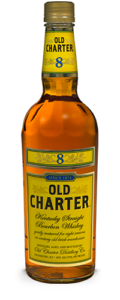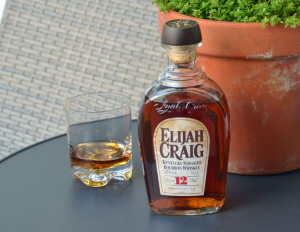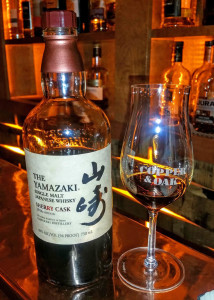The Bourbon Shortage Was Never Real, And Here Is Why
By Richard Thomas
Just a few years ago, the word in bourbon circles was you’d better horde the good stuff now, because we were in the midst of a bourbon shortage. A scenario where increased demand would drain even the gigantic lake of bourbon sitting in Kentucky rickhouses was postulated by pundits higher up the ladder than I am, repeated by many times over on blogs and forums, and believed by just about everyone.
What A Real Shortage Looks Like
My lonely reply, one I’ve repeated since 2015, was if you wanted an example of a real shortage, look at Japan. To fuel the signal fires that led to their discovery as a world class source of whisky, the two big Japanese distillers–Suntory and Nikka–turned out some magnificent aged expressions and distributed them far beyond what their base of stock could support. They burned through their aged stocks faster than those could be replaced, outstripping production. Once Japanese whisky became a hot ticket item, Suntory and Nikka found themselves in a serious bind.
In 2015, Suntory jacked up prices by 20 to 25% across the board; Nikka eliminated 17 expressions, most of them replaced by no age statement (NAS) whiskies. Ever more stringent measures to keep their brands on shelves with the stocks the two companies have followed year upon year. That is what a real shortage looks like, akin to a whiskey version of a 1970s style gas line. While America did experience such a moment, it was the brief crunch on rye whiskey in 2011 and not bourbon in 2015.
How To Make More Money With The Same Old Stuff
As a rule, when an existing age statement whiskey disappeared in America, it has usually been because the company making it followed one of two business approaches to making more money with the same amount of stock. The first was to formulate a new expression that could fill more bottles and be put into wider distribution, occupying more space on liquor store and bar shelves.
This model was behind most of the brand moves to NAS status. If a company takes a 12 year old bourbon, made with 12 to 15 year old stock, and replaces it with an NAS made with 7 to 10 year old stock, they automatically have at least a little more bourbon to work with because of the reduced angel’s share. They can also utilize their increased production from several years before ahead of schedule. Thus more bottles go out, filling more shelf space and selling more units at the same price while better meeting demand.
The second approach was to replace an existing brand with something a little older or more rarified in some way, but at a substantial mark-up in price. Often times these two approaches are interlocking, because so many different products at a major distilling company are drawn from the same base of stock. In the above example, the change to NAS frees up the existing stock of 12 to 15 year old bourbon for use in new brands or for further aging, to bolster the expansion of ultra-aged expressions down the road.

The new Old Charter is NAS, but retained the number 8 on the bottle, leading some to charge it was misleading.
(Credit: Sazerac)
The bottom line for both these scenarios was that no beloved, aged bourbon was discontinued because demand drained the rickhouses and it couldn’t be made anymore, a scenario that was always strongly implied by the over-hyped stories about a shortage. Every brand in existence in 2010 could have continued as they were then formulated and planned; few, if any, would have suffered the scarcity afflicting so many of the brands made by Buffalo Trace nowadays. Maker’s Mark, for example, has been on allocation for decades, but you have always been able get it at recommended retail price just by knowing what stores carried it.
The proof in all of this has been the recent events with Knob Creek. The brand not only reintroduced their classic 9 year old small batch after an absence of less than four years; they one-upped it by introducing a new 12 year old expression as well. Moves like that don’t really speak to Beam’s middle aged stocks of bourbon having been drained by a thirsty public in 2016.
Some people were telling parts of this more accurate, but also more complex version of the shortage story all along. But it’s axiomatic that more sophisticated and less scary truth is harder to sell than a frightening myth, both in terms of the skill it takes to tell the story and the story’s inherent marketability. Now that the story has played out over the last half-decade and didn’t unfold the way it was supposed to, it should be easier to look back on events and see that what happened certainly made some brands scarcer on store shelves, but doesn’t fit the definition of a shortage.
 The Whiskey Reviewer A World of Whiskey, Poured Every Weekday
The Whiskey Reviewer A World of Whiskey, Poured Every Weekday



Corporate greed explains it all…Having huge globalist ownership with smart, slick marketing divisions.
Not saying it js bad…just saying jt js true.
Your Elijah Craig 12 is a perfect example.
The red 12 on the front disappeared in 2015..the black 12 too on the back…just the written word twelve for thar final year..
Then, the 94 proof no age small batch came..
Not even close as good as the 12 …but pretty damn good.
They got more bottles out to the public..kept the price down AND for the whisky geeks have the 3 times a year 12 year age statement barrel proof releases.
Corporate greed but with some brains behind it.
I just found 7 bottles of the red 12 you have in your pic…it is my dream come true find in the back of my store here in Cambodia…
I have liters of Jim Beam 12 signature as well …
Alas, Cambodia has some older inventory.
But, prices are great and I can get liters of 101WT for 24us and Maker’s Mark for $25us..no tax..
Funny how Buffalo Trace and Eagle Rare are here and I have them…but the prices are jacked up making them a one time buy for any guest who may stop in…
I have a big selection of Japanese Whiskys and the prices are well past making them worth buying except maybe the coffey malt…
I think the 12 year Jim Beam at 86 proof was an international idea Suntory promoted and though it is good it begs to be over 100 proof.
Cheers from Siem Reap
While reading your comment I was shocked to hear you mention Cambodia. My mom is from Battambang and to hear you speak about Cambodia with bourbon in the mix is even more amusing. Do you run a liquor store? Would like to get the name if you do. Cheers from Canada!